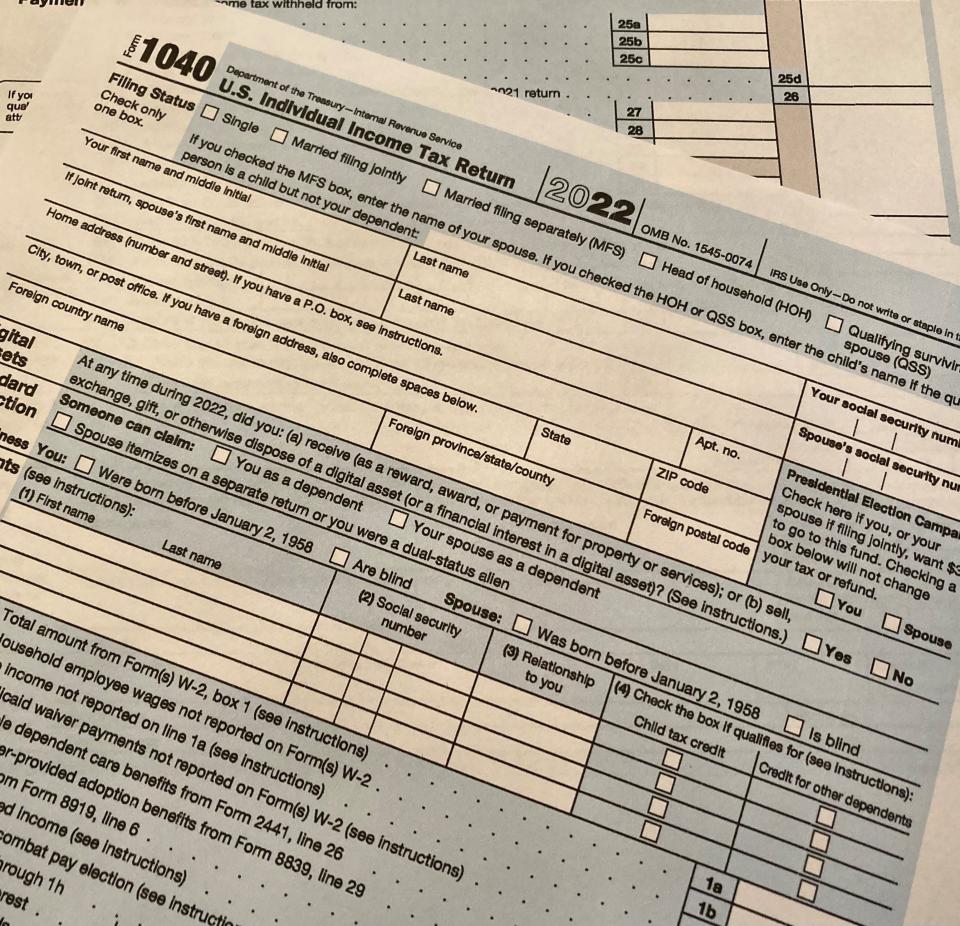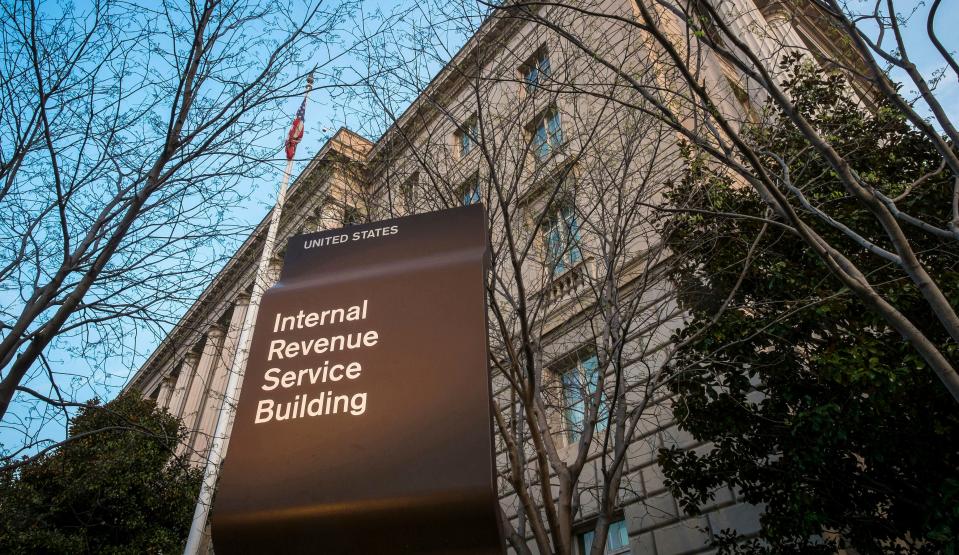IRS warns that a tax credit everyone's heard about definitely isn't for everyone
We've heard the radio ads. We've seen the tweets. Many small business owners and others even ended up being flooded with spam calls about how an employee retention credit — worth up to $26,000 per worker — can be a real game changer.
If you're hungry for cash, you might be primed to imagine that this tax break can work for anyone who was forced to keep working during the pandemic. Pretty good deal.
But it can't be real, right?
Yep, if it sounds wacky, it probably is — and you might lose a bunch of money along the way.
One problem chasing the big money promoted in a tweet or a radio ad is that it could mean that you'll end up handing out big money in upfront fees to fast talkers who don't tell you the real deal. And you could run into trouble with the Internal Revenue Service.

If you claim the credit when you shouldn't, you could have to pay it back — plus interest and penalties. Some small businesses could end up owing hundreds of thousands of dollars or more if they file an improper claim.
The IRS is warning, once again, that some outside companies are aggressively marketing tax credit schemes on radio and social media. Worse yet, people could be arguing with their tax professionals about why they suddenly deserve these credits when, no, they actually don't.
The IRS stated: "Tax professionals note they continue to be pressured by people wanting to claim credits improperly."
What is the employee retention credit?
It's a refundable tax credit for businesses that continued to pay employees while the company ended up being shut down during the COVID-19 pandemic or had a significant decline in gross receipts from March 13, 2020, through Dec. 31, 2021.
For 2020, qualified employers were able to claim up to 50% of $10,000 in qualified wages or health plan expenditures per employee — or a maximum of $5,000 per employee.
For 2021, up to 70% of those expenses up to $10,000 could be claimed for a maximum of $7,000 per employee.
The credit applies to the last three quarters of 2020 and to the first three quarters of 2021.
Combine the two years and you could get a up to $26,000 per employee, as advertised.
More:Is the IRS really texting you? No, it's one of many tax scams.
More:There's no secret way to get free money or a big refund, IRS warns
More:Michigan property tax bills to head higher in 2023, thanks to inflation
Why it won't work for many
Key word: businesses. Upfront, you need to know this credit does not apply to individual employees. It's a credit that's available to a business, not all taxpayers.
Like many tax rules, especially those created for pandemic-related relief, we're talking about complex guidelines here.
For example, the IRS notes that eligible employers cannot claim the retention credit on wages that were already reported as payroll costs to get Paycheck Protection Program loan forgiveness or that were used to claim other credits.
Jon Williamson, senior manager for tax policy and advocacy at the American Institute of Certified Public Accountants, said many gray areas exist when it comes to actually being able to qualify for the credit. Some credit and incentive firms, he said, use a very loose definition regarding the terms and requirements for the tax credit to make it seem like more businesses qualify when they don't.
The pandemic-related credit is no longer being offered for business activity in 2022 and afterward. But ongoing ads prompt some businesses to amend their previous returns for 2020 or 2021 to take advantage of the generous credit in the CARES Act.
The Coronavirus Aid, Relief, and Economic Security Act, enacted on March 27, 2020, provided for an employee retention tax credit to encourage eligible employers to keep people on their payroll despite the difficult economic conditions.
Many companies already claimed the credit. But outside firms continue to push the possibility in radio ads and social media as an option for others.

"There's a nonstop barrage of advertisements claiming these funds are available if you paid employees through the pandemic," Williamson said.
The ads seem to indicate that the credit is a sure thing when it's not.
Two separate and distinct tests exist, he said. One involves seeing whether gross receipts fell during this time, including sales; the other looks at the impact of a government shutdown.
For example, Williamson said, a credit and incentive firm might make the argument that every business was impacted by government shutdowns during the pandemic. But that's too general.
When it comes to the tax credit, he said, you have to look at how the government shutdown affected the operations of the business. A case for a "shutdown" claim can made if the business can prove it was hurt by a full or partial suspension of operations in the pandemic.
Who isn't going to qualify?
Take, for example, a business that actually saw higher gross receipts during the pandemic. Maybe the business shut down its offices and sent employees home but employees productively worked from home. The employees were efficient and able to do the same work as before the pandemic; no business operation was disrupted, and the business kept making money. Such a business wasn't impacted by the shutdown under the definition of an employee retention credit, Williamson said, and it likely isn't going to qualify for this credit.
Generally speaking, it's clearer that a business would qualify, he said, if a company can show a significant drop in its gross receipts when the government limited "commerce, travel or group meetings" due to COVID-19 in 2020 or the first three quarters of 2021.
You never want your gross receipts to decline, he said, but if you saw a 75% decline due to the pandemic, you'd have a higher comfort level claiming the employee retention credit.
"That's a purely numbers-based fact that's hard to question," he said.
As for someone who kept working? No, they do not get a credit now or ever.
"Many times when you attach the word 'employee' to a credit, I can see where some confusion comes in," Williamson said. But again, it's a credit for the employer, not the employee.
The credit itself clearly has been abused by fraudsters, said Mark Steber, chief tax officer at Jackson Hewitt Tax Service.
"I suspect most professionals who are offering to help or assist with the employer retention credit are very much legitimate and expert in this area," Steber said.
"But not all and some are just simply criminal."
Fraudsters look for all sorts of ways to engineer tax refunds that aren't on the up-and-up, he said, including wrongly tapping into stimulus programs or abusing a tax credit several years ago that was once offered to new homeowners.
"Tax benefits and cash associated with them sometimes draw in bad players," Steber said.
Maybe it sounds like it should be obvious, but you really should not expect to find solid, complete tax advice on Twitter or TikTok. The IRS has warned of other schemes to avoid this tax season, too.
One scheme now being promoted on social media, according to the IRS, encourages people to use tax software to manually fill out their own Form W-2, Wage and Tax Statement. You pick the employer, you pick the income and create the fictitious number for taxes already withheld from that phony job.
People are told, according to the IRS, to file the bogus tax return electronically in "hopes of getting a substantial refund — sometimes as much as five figures — due to the large amount of withholding."
The taxpayer is responsible for making any false claims.
Yeah, it's not a smart idea.
You don't want to claim any credit or tax refund for which you're not eligible.
The IRS issued a similar warning in October warning to be "cautious of advertised schemes and direct solicitations promising tax savings that are too good to be true."
In some cases, the IRS warned, you could end up overstating your wage deductions.
The IRS warned that promoters are aggressively misleading people. You've got to be skeptical and review the guidelines.
If a tax professional raises questions about the accuracy of such a claim and tries to warn you against claiming the employee retention credit, then, you should listen to his or her advice, according to Acting IRS Commissioner Doug O'Donnell.
"The IRS is actively auditing and conducting criminal investigations related to these false claims. People need to think twice before claiming this," O'Donnell said in a statement.
The IRS said taxpayers can report tax-related illegal activities relating to employee retention credit claims on Form 14242.
If a business or individual claimed the credit when they now realize they should not have done so, the IRS and tax professionals recommend filing an amended return to correct any overstated wage deduction.
Contact Susan Tompor: stompor@freepress.com. Follow her on Twitter @tompor. To subscribe, please go to freep.com/specialoffer.
This article originally appeared on Detroit Free Press: Employee retention tax credit ads may be scam, IRS warns

